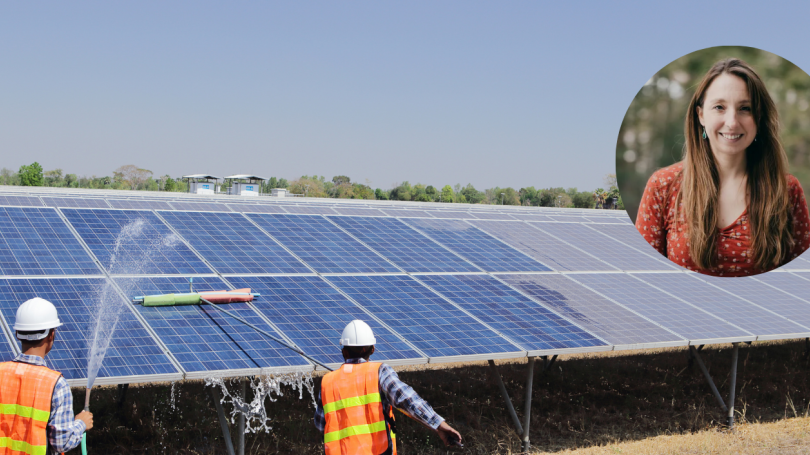
- About
- Education
- Research
- Engagement & Collaboration
- News & Events
Back to Top Nav
Back to Top Nav
Back to Top Nav
Back to Top Nav
Research by Dartmouth's Erin Mayfield, featured in a recent Anthropocene article, "Who's Getting Hired and Fired in the Rush to Decarbonize?", explores the employment impacts of a low-carbon economy. Mayfield and her colleagues' findings suggest that a shift toward a low-carbon economy in the United States could create two to three new green jobs for every fossil fuel job lost—a result consistent with previous research from U.C. Berkeley.
On a global scale, 2021 marked the first time that more people were employed in clean energy than in fossil fuels. However, this shift presents challenges for communities historically dependent on the fossil fuel industry for stable, well-paying jobs.
For example, Texas, home to the nation's largest energy workforce, is expected to see a transformation in its energy sector, with the workforce shifting from 80% fossil fuel jobs to 80% green energy jobs by 2050, without an overall net job loss. In contrast, states like North Dakota, which experienced a natural gas boom, and West Virginia, a traditional coal mining state, may initially face net job losses during the transition. However, projections indicate that states like West Virginia could see a net increase in energy jobs by 2050.
"As the economy decarbonizes, we find that there are acute job losses in specific communities where mining has historically been the dominant employer," Mayfield and her co-authors note.
The employment impacts of the clean energy transition will continue to evolve, with varying effects across different regions and industries.